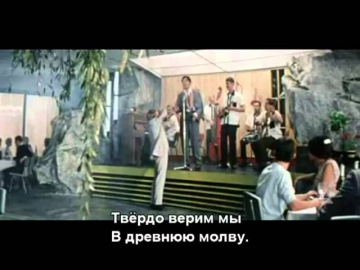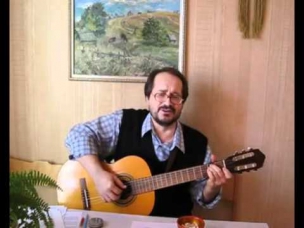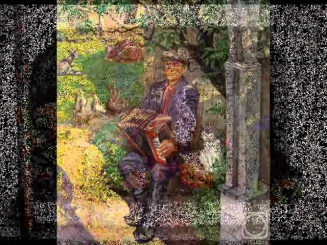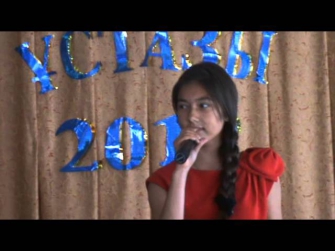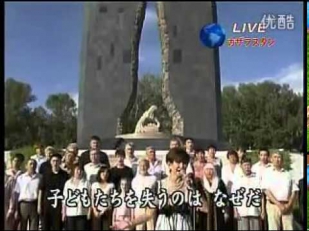Авторизация на сайте
Музыкальные стили
Что прочитать
Песни которые слушают

французский пианист жак лусье
Gnossienne No. 3 Jacques Loussier Trio Erik Satie, 1890 ( Жак Лусье, французский пианист - импровизатор классиков,1934 Alfred Eric Leslie Satie Honfleur, 17 May 1866 -- Paris, 1 July 1925 was a French composer and pianist. Starting with his first composition in 1884, he signed his name as Erik Satie.
Satie was introduced as a "gymnopedist" in 1887, shortly before writing his most famous compositions, the Gymnopédies. Later, he also referred to himself as a "phonometrograph" or "phonometrician" meaning "someone who measures and writes down sounds" preferring this designation to that of "musician," after having been called "a clumsy but subtle technician" in a book on contemporary French composers published in 1911.
In addition to his body of music, Satie also left a remarkable set of writings, having contributed work for a range of publications, from the dadaist 391 to the American Vanity Fair. Although in later life he prided himself on always publishing his work under his own name, in the late nineteenth century he appears to have used pseudonyms such as Virginie Lebeau and François de Paule in some of his published writings.
Satie was a colourful figure in the early 20th century Parisian avant-garde. He was a precursor to later artistic movements such as minimalism, repetitive music and the Theatre of the Absurd.
"Gnossienne" is the name given to several piano pieces by French composer Erik Satie in the late 19th century.
Satie's coining of the word "gnossienne" was one of the rare occasions when a composer used a new term to indicate a new "type" of composition. Satie had and would use many novel names for his compositions; for example, "ogive" had been the name of an architectural element until Satie used it as the name for a composition, the Ogives Similarly with "vexations", "croquis et agaceries" and so on—but "gnossienne" was a word that did not exist before Satie used it to indicate a composition. "Gnossienne" appears to be derived from the word gnosis; Satie was involved in gnostic sects and movements at the time that he began to compose the Gnossiennes. However, some published versions claim that the word derives from Cretan "knossos" or "gnossus" and link the Gnossiennes to Theseus, Ariadne and the Minotaur myth.
The Gnossiennes were composed by Satie in the decade following the composition of the Trois Sarabandes 1887 and the Trois Gymnopédies 1888. Like these Sarabandes and Gymnopédies, the Gnossiennes are often considered dances. It is not certain that this qualification comes from Satie himself—the sarabande and the Gymnopaedia were at least historically known as dances.
The musical vocabulary of the Gnossiennes is a continuation of that of the Gymnopédies a development that had started with the 1886 Ogives → Sarabandes → Gymnopédies → Gnossiennes later leading to more harmonic experimentation in compositions like the Danses Gothiques. These series of compositions are all at the core of Satie's characteristic 19th century style, and in this sense differ from his early salon compositions like the 1885 "Waltz" compositions published in 1887, his turn-of-the-century cabaret compositions like the Je te Veux Waltz, and his post-Schola Cantorum piano solo compositions, starting with the Préludes flasques in 1912.
[from Wikipedia]
Performed by:Reinbert de Leeuw
Artwork:Remedios Varo
Satie was introduced as a "gymnopedist" in 1887, shortly before writing his most famous compositions, the Gymnopédies. Later, he also referred to himself as a "phonometrograph" or "phonometrician" meaning "someone who measures and writes down sounds" preferring this designation to that of "musician," after having been called "a clumsy but subtle technician" in a book on contemporary French composers published in 1911.
In addition to his body of music, Satie also left a remarkable set of writings, having contributed work for a range of publications, from the dadaist 391 to the American Vanity Fair. Although in later life he prided himself on always publishing his work under his own name, in the late nineteenth century he appears to have used pseudonyms such as Virginie Lebeau and François de Paule in some of his published writings.
Satie was a colourful figure in the early 20th century Parisian avant-garde. He was a precursor to later artistic movements such as minimalism, repetitive music and the Theatre of the Absurd.
"Gnossienne" is the name given to several piano pieces by French composer Erik Satie in the late 19th century.
Satie's coining of the word "gnossienne" was one of the rare occasions when a composer used a new term to indicate a new "type" of composition. Satie had and would use many novel names for his compositions; for example, "ogive" had been the name of an architectural element until Satie used it as the name for a composition, the Ogives Similarly with "vexations", "croquis et agaceries" and so on—but "gnossienne" was a word that did not exist before Satie used it to indicate a composition. "Gnossienne" appears to be derived from the word gnosis; Satie was involved in gnostic sects and movements at the time that he began to compose the Gnossiennes. However, some published versions claim that the word derives from Cretan "knossos" or "gnossus" and link the Gnossiennes to Theseus, Ariadne and the Minotaur myth.
The Gnossiennes were composed by Satie in the decade following the composition of the Trois Sarabandes 1887 and the Trois Gymnopédies 1888. Like these Sarabandes and Gymnopédies, the Gnossiennes are often considered dances. It is not certain that this qualification comes from Satie himself—the sarabande and the Gymnopaedia were at least historically known as dances.
The musical vocabulary of the Gnossiennes is a continuation of that of the Gymnopédies a development that had started with the 1886 Ogives → Sarabandes → Gymnopédies → Gnossiennes later leading to more harmonic experimentation in compositions like the Danses Gothiques. These series of compositions are all at the core of Satie's characteristic 19th century style, and in this sense differ from his early salon compositions like the 1885 "Waltz" compositions published in 1887, his turn-of-the-century cabaret compositions like the Je te Veux Waltz, and his post-Schola Cantorum piano solo compositions, starting with the Préludes flasques in 1912.
[from Wikipedia]
Performed by:Reinbert de Leeuw
Artwork:Remedios Varo
Рейтинг: 0
Певец: Jacques Loussier Trio (Erik Satie, 1890) ( Жак Лусье, французский пианист - импровизатор классиков,1934
Песня: Gnossienne No. 3
Длина файла: 04:27
Дата добавления: 2014-10-23
Текст просмотрен: 1206
Вам понравится и:
- Jacques Loussier - Variation Two 7 симф.Бетховена
- Lynne Arriale Trio - An Affair To Remember
- The John Butler Trio - Peaches & Cream
- Bill Evans Trio - The Peacocks
- Franco Ambrosetti & Uri Caine Trio - The Wind
- The Ray Brown Trio - The day of vine and roses
- Erik Karapetyan - Arajin u miak
- Erik - Yerani imanam (2013)
- Junior Wells(1934-1998гг.)- американский блюзовый певец - Why are People Like That?
Фильмы
Erik Satie - Gnossienne No.3
Комментарии (0)
Добавить коментарий
